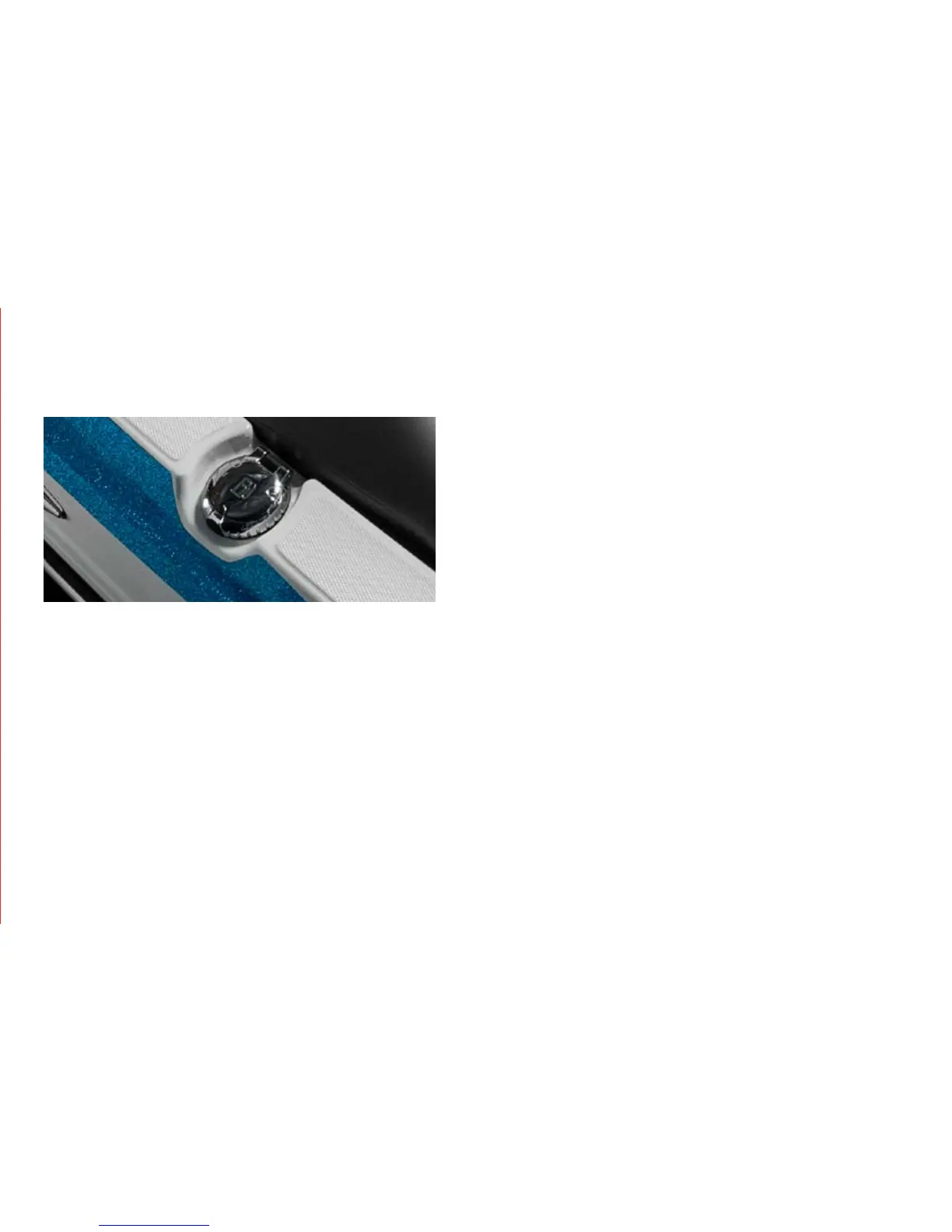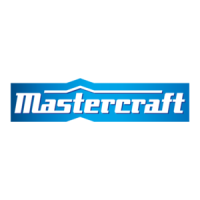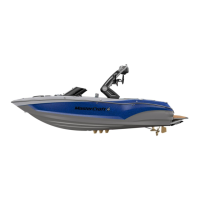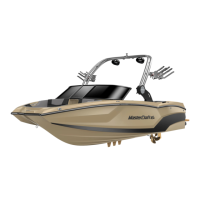2016 OWNERS MANUAL / 0299
USING CARE WHEN FUELING
MasterCraft boats are equipped with a highly innovative fuel
system. This system is designed to provide years of trouble-free
service. Some of the latest innovations related to fuel handling
safety are also incorporated into the fuel delivery system.
The fuel pump system in your boat was specifically designed
for the marine environment and contains a number of added safety
components that are unique to the marine environment. Because
of the special nature of the design, there are no user-serviceable
parts. Any parts in need of service or maintenance will need to be
addressed by an authorized MasterCraft dealer. An authorized
MasterCraft dealer is equipped with the special tools necessary to
disassemble and service the fuel capsule and associated parts.
Replacement parts must meet OEM requirements as specified by
MasterCraft.
The fuel line in the bilge area that goes from the tank to the
engine is a special multi-layer armored line that is covered with
a special material known as a fire sleeve. The fire sleeve affords
protection to the fuel line in the unlikely event of a boat fire. The
sleeve is colored orange for easy identification of the fuel line.
During the first time the fuel tank is filled, the process will be
very slow. Air is being displaced in the system. In all subsequent
fuel-filling, the process will take about the same amount of time as it
does to fill a land-based vehicle.
During refueling you should reasonably expect to avoid having
any fuel spit-back or well-back when using an automatic shut-off
fuel pump nozzle. All land-based gas stations in North America
are required to use these; some marinas may not. Therefore, we
recommend that you never leave the fuel fill unattended when fueling.
MasterCraft also recommends daily inspection of the bilge for
foreign materials and the possibility of gas or oil leakage detection.
As part of your daily inspection, include a visual check of the orange
fire-sleeved fuel line. If you see damage to the sleeve or line or in
any way suspect damage or fuel leakage,
